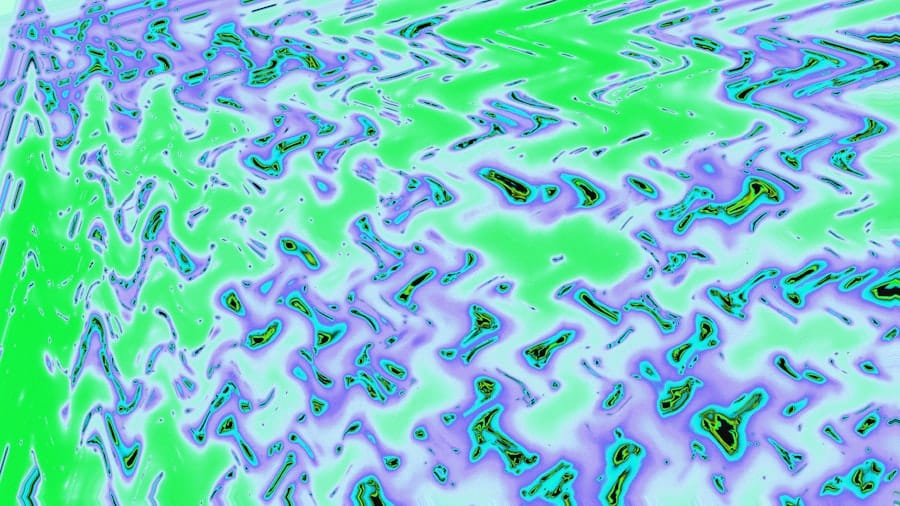Spatial computing represents a transformative shift in how we interact with digital information and the physical world. It encompasses a range of technologies, including augmented reality (AR), virtual reality (VR), and mixed reality (MR), which allow users to engage with digital content in a spatial context. This paradigm enables the blending of the physical and digital realms, creating immersive experiences that can enhance various aspects of life, from entertainment to education and professional collaboration.
As the technology continues to evolve, it is becoming increasingly integrated into everyday applications, fundamentally altering how we perceive and interact with our environment. The rise of spatial computing is driven by advancements in hardware and software, including powerful processors, sophisticated sensors, and improved display technologies. These innovations have made it possible to create highly realistic simulations and interactive environments that respond to user actions in real-time.
As a result, spatial computing is not merely a technological novelty; it is poised to redefine industries by enabling new forms of interaction and collaboration. The implications of this shift are profound, as organizations seek to leverage these capabilities to enhance productivity, creativity, and engagement among teams and stakeholders.
Key Takeaways
- Spatial computing integrates digital information into the physical world, creating a more immersive and interactive experience.
- Immersive collaboration involves multiple users interacting in a shared digital environment, often facilitated by virtual reality or augmented reality technology.
- Spatial computing enhances immersive collaboration by allowing users to interact with digital content in a physical space, improving communication and understanding.
- Advantages of immersive collaboration with spatial computing include enhanced creativity, improved decision-making, and the ability to work together regardless of physical location.
- Challenges of immersive collaboration with spatial computing include technical limitations, potential for distraction, and the need for user training and adaptation.
Understanding Immersive Collaboration
Immersive collaboration refers to the ability of individuals or teams to work together in a shared virtual space, regardless of their physical locations. This concept is particularly relevant in today’s globalized world, where remote work has become increasingly common. Immersive collaboration leverages technologies such as VR and AR to create environments where participants can interact with each other and digital content as if they were in the same room.
This approach fosters a sense of presence and engagement that traditional video conferencing tools often lack. The essence of immersive collaboration lies in its ability to simulate real-world interactions. For instance, participants can manipulate 3D models, brainstorm ideas on virtual whiteboards, or conduct training sessions in lifelike scenarios.
This level of interactivity not only enhances communication but also encourages creativity and innovation. By immersing users in a shared space, immersive collaboration can break down barriers that often hinder effective teamwork, such as miscommunication or lack of engagement. As organizations increasingly adopt remote work practices, the demand for effective immersive collaboration tools continues to grow.
The Role of Spatial Computing in Immersive Collaboration

Spatial computing plays a pivotal role in facilitating immersive collaboration by providing the necessary technological framework for creating shared virtual environments. Through the use of AR and VR headsets, users can enter digital spaces that replicate real-world settings or create entirely new ones tailored to specific collaborative tasks. This technology allows for a more intuitive interaction with digital content, as users can manipulate objects with their hands or through gestures, making the experience feel more natural and engaging.
Moreover, spatial computing enhances the sense of presence among participants in an immersive collaboration setting. When individuals don headsets or use AR devices, they are transported into a shared virtual environment where they can see and interact with each other as avatars or holograms. This visual representation fosters a deeper connection between team members, as they can read body language and facial expressions—elements often lost in traditional communication methods.
The ability to visualize complex data or concepts in three dimensions further enriches discussions and decision-making processes, making spatial computing an essential component of effective immersive collaboration.
Advantages of Immersive Collaboration Enabled by Spatial Computing
The advantages of immersive collaboration enabled by spatial computing are manifold. One significant benefit is the enhanced engagement it offers compared to conventional collaboration tools. In a virtual environment, participants are more likely to remain focused and actively contribute to discussions, as the immersive nature of the experience captures their attention.
This heightened engagement can lead to more productive meetings and brainstorming sessions, ultimately driving better outcomes for projects. Another advantage is the ability to visualize complex information in ways that are not possible through traditional means. For example, architects can present 3D models of buildings that clients can explore from different angles, allowing for immediate feedback and adjustments.
Similarly, medical professionals can simulate surgical procedures in a virtual environment, providing training opportunities that are both safe and realistic. This capability not only enhances understanding but also accelerates the decision-making process by allowing stakeholders to see the implications of their choices in real-time.
Challenges and Limitations of Immersive Collaboration with Spatial Computing
Despite its numerous advantages, immersive collaboration through spatial computing is not without challenges and limitations. One significant hurdle is the accessibility of the technology itself. High-quality AR and VR systems can be expensive, making it difficult for smaller organizations or teams with limited budgets to adopt these tools.
Additionally, there may be a steep learning curve associated with using these technologies effectively, which could deter some users from fully engaging with immersive collaboration platforms. Another challenge lies in ensuring seamless integration with existing workflows and tools. Organizations often rely on established software for project management, communication, and data sharing.
Integrating spatial computing solutions into these existing systems can be complex and may require significant changes to established processes. Furthermore, issues related to bandwidth and latency can impact the quality of immersive experiences, particularly when multiple users are collaborating in real-time across different locations. These technical limitations can hinder the effectiveness of immersive collaboration efforts.
Applications of Spatial Computing in Immersive Collaboration
The applications of spatial computing in immersive collaboration span various industries and use cases. In the realm of education, for instance, educators are increasingly utilizing VR platforms to create interactive learning experiences that engage students in ways traditional classrooms cannot. Virtual field trips allow students to explore historical sites or scientific phenomena without leaving their classrooms, fostering curiosity and enhancing understanding through experiential learning.
In the corporate sector, companies are leveraging spatial computing for training and development purposes. For example, organizations in manufacturing or healthcare can use VR simulations to train employees on complex machinery or medical procedures without the risks associated with real-world training environments. This approach not only improves safety but also allows for repeated practice until proficiency is achieved.
Additionally, design teams in industries such as automotive or fashion can collaborate on product development using AR tools that enable them to visualize designs in real-time, facilitating faster iterations and more innovative outcomes.
Future Trends and Developments in Spatial Computing for Immersive Collaboration
As spatial computing technology continues to advance, several trends are emerging that will shape its future role in immersive collaboration. One notable trend is the increasing integration of artificial intelligence (AI) into spatial computing platforms. AI can enhance user experiences by providing intelligent assistance during collaborative sessions, such as suggesting design modifications based on user input or analyzing data trends in real-time.
This integration will likely lead to more efficient workflows and improved decision-making processes. Another trend is the growing emphasis on cross-platform compatibility. As organizations adopt various tools for collaboration, there is a pressing need for spatial computing solutions that can seamlessly integrate with existing software ecosystems.
Future developments may focus on creating interoperable platforms that allow users to transition smoothly between different applications while maintaining a consistent immersive experience. This will enhance user adoption rates and ensure that spatial computing becomes an integral part of everyday collaborative practices.
The Impact of Spatial Computing on Immersive Collaboration
The impact of spatial computing on immersive collaboration is profound and far-reaching. By enabling teams to work together in shared virtual environments, this technology fosters deeper engagement, enhances communication, and facilitates innovative problem-solving across various industries. As organizations continue to navigate the complexities of remote work and global collaboration, the demand for effective immersive collaboration tools will only increase.
While challenges remain regarding accessibility and integration with existing workflows, ongoing advancements in spatial computing promise to address these issues over time. The future holds exciting possibilities for how we collaborate, learn, and create together in an increasingly interconnected world. As spatial computing technologies evolve and become more accessible, they will undoubtedly play a crucial role in shaping the future landscape of collaborative work environments.
In the rapidly evolving landscape of technology, spatial computing is playing a pivotal role in enhancing immersive collaboration. This innovative approach allows users to interact with digital content in a three-dimensional space, making remote collaboration more intuitive and engaging. A related article that delves into the broader implications of technology in our daily lives is available on How-To Geek, an online technology magazine. This publication offers insights into various tech advancements and their practical applications. For more information, you can explore the article here.
FAQs
What is spatial computing?
Spatial computing is a type of computing that takes into account the physical space around the user, allowing for interaction with digital content in a more natural and immersive way. It combines elements of virtual reality, augmented reality, and mixed reality to create a seamless user experience.
How is spatial computing enabling immersive collaboration?
Spatial computing enables immersive collaboration by allowing users to interact with digital content in a shared physical space. This means that multiple users can work together in a virtual environment, manipulating and interacting with digital objects as if they were physically present.
What are some examples of spatial computing in immersive collaboration?
Examples of spatial computing in immersive collaboration include virtual meetings where participants can interact with 3D models and data visualizations, collaborative design sessions where team members can manipulate virtual prototypes, and remote training sessions where users can practice skills in a virtual environment.
What are the benefits of using spatial computing for immersive collaboration?
The benefits of using spatial computing for immersive collaboration include increased engagement and productivity, the ability to work with remote team members as if they were in the same physical space, and the potential for more creative and innovative problem-solving.
What are some challenges of implementing spatial computing for immersive collaboration?
Challenges of implementing spatial computing for immersive collaboration include the need for specialized hardware and software, potential privacy and security concerns related to sharing sensitive information in a virtual environment, and the learning curve for users who are new to this type of technology.


